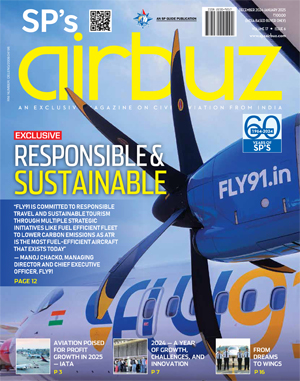The 55th International Paris Air Show 2025: A Grand Convergence of Aerospace Excellence
Innovation and sustainability took flight at the 2025 Paris Air Show, alongside rising defence priorities and attention towards advancement in space.
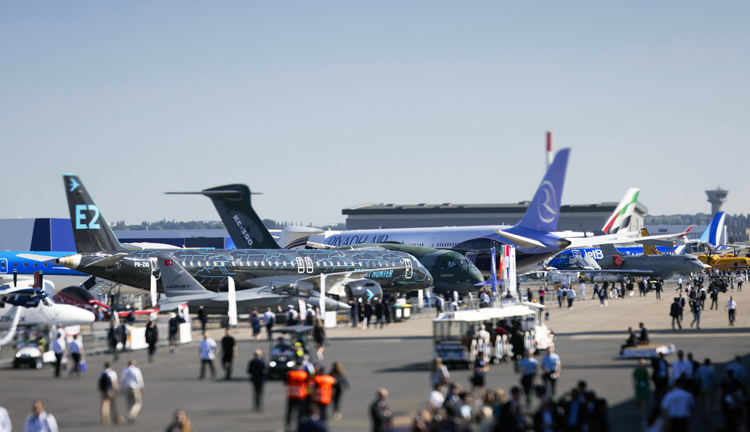
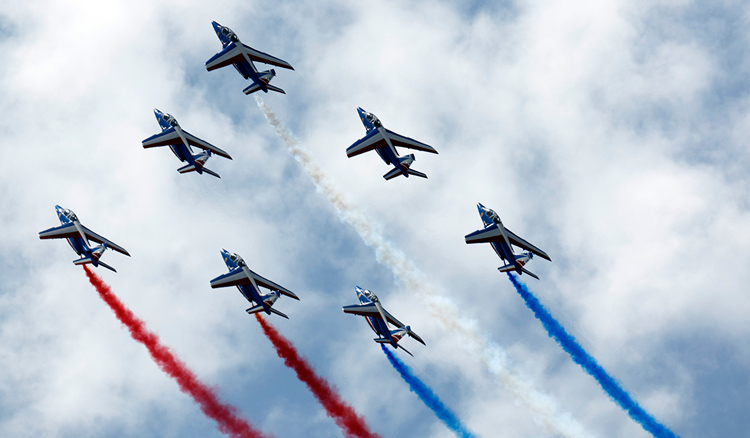
For more than a century, the International Paris Air Show at Le Bourget has stood as a beacon for the global aerospace industry, a place where innovation takes flight, dreams ascend, and the future of aviation is shaped. The 55th edition, held from June 16 to 22, 2025, once again demonstrated the event's unparalleled ability to gather the world's aerospace leaders, foster vital exchanges, and showcase the very best of French and international aerospace achievement.
The 55th edition, held from June 16 to 22, 2025, once again demonstrated the event's unparalleled ability to gather the world's aerospace leaders, foster vital exchanges, and showcase the very best of French and international aerospace achievement
Today, the Paris Air Show (PAS) is recognised as the prime international meeting point for the aerospace sector, drawing together manufacturers, suppliers, government delegations, military officials, and industry professionals from across the globe. The event is a showcase for the latest advancements in civil aviation, defence, and space, providing a unique platform for the unveiling of new aircraft, satellites, propulsion systems, armaments, and flight assistance technologies. It is a place where some of the industry's biggest deals are struck, strategic alliances are forged, and the technological roadmap for the coming years is set.
Officially inaugurated by French Prime Minister François Bayrou on June 16, the 2025 Paris Air Show was recognised as a major national event. The opening set the tone for a week marked by exceptional scale and ambition, with exhibition halls, chalets, static displays, and flight demonstrations all contributing to the show's dynamic atmosphere. The presence of President Emmanuel Macron on June 20, along with 15 French ministers and secretaries of state, underscored the event's importance not only to France but to the global aerospace community.

This year's show attracted a record 3,05,000 unique visitors, 53 per cent of whom were from the general public, reflecting the event's broad appeal beyond the aerospace industry itself. The exhibition hosted 2,400 exhibitors from 48 countries, including 1,124 French companies and 136 startups, highlighting both the depth and diversity of participants. The scale of the event was further emphasised by 332 chalets, a complete sell-out of all exhibition halls, and a sprawling 70 hectares of exhibition space.
A total of 155 aircraft were displayed, with 173 flight demonstrations captivating audiences and showcasing the latest advancements in aviation technology. The show's reach extended to 400 official delegations (civilian and military) from France and abroad, as well as 2,200 accredited journalists representing 67 countries, ensuring extensive media coverage and global visibility.
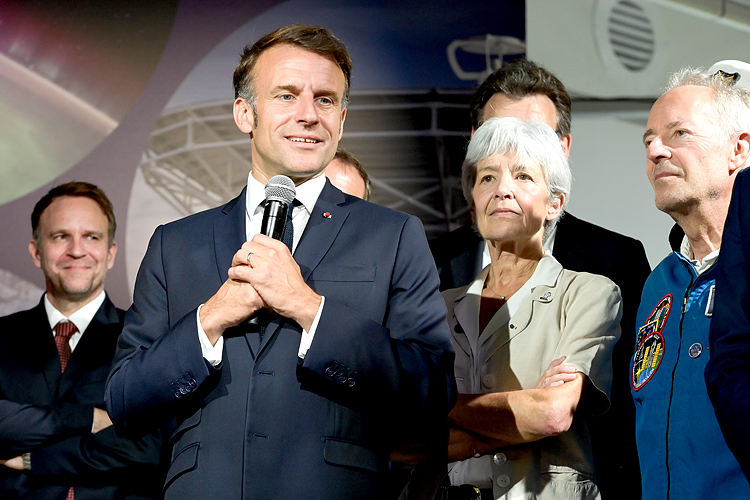
High-Level Delegations and Institutional Presence
The Paris Air Show's role as a hub for international cooperation was evident in the impressive array of official delegations. Among the 400 delegations were 80 civil delegations invited by the French Ministry of Transport, representing 64 countries and five international organisations. For the first time, a delegation from the International Civil Aviation Organisation (ICAO) attended, led by its President and Secretary General. The civil sector was further represented by 12 civil aviation ministers and 62 directors general of civil aviation.
On the military side, 174 official delegations attended at the invitation of the French Ministry of the Armed Forces, representing 77 countries and five international organisations. These included 17 ministers, nine deputy ministers or secretaries of state, 36 chiefs of staff, and 26 directors general of armament. Additionally, 149 other institutional delegations, both French and international, participated, including 20 from EU institutions, three from NATO, and several from the European Commission.
Promoting Aerospace Culture and Careers
The 2025 PAS was not just a gathering of industry professionals; it was a celebration of aviation in all its forms, designed to engage and inspire the public. The show featured numerous events aimed at promoting dialogue, spreading scientific and industrial culture, and strengthening the appeal of a sector that innovates, creates value, decarbonises, ensures defence and security, and trains and recruits widely.
This year's show attracted a record 305,000 unique visitors, 53 per cent of whom were from the general public, reflecting the event's broad appeal beyond the aerospace industry itself
Notable public events included the Paris Space Hub, the Paris Air Lab, Start-Me-Up, and the Avion des Métiers, which welcomed 7,000 school students throughout the week. Initiatives like L'Aéro Recrute and the Women in Aerospace and Space program highlighted the sector's commitment to inclusivity and diversity. The week-long major aerial show and a three-day popular celebration of aerospace and space further reinforced the event's festive and educational spirit.
The Paris Space Hub
Space exploration took center stage in 2025 with the launch of the Paris Space Hub, a brand-new setting that offered an immersive journey into the latest achievements in satellite technology, lunar exploration, and scientific breakthroughs. The Space Hub reflected the innovative spirit of the aerospace industry, offering accessible and thought-provoking experiences for visitors of all ages.
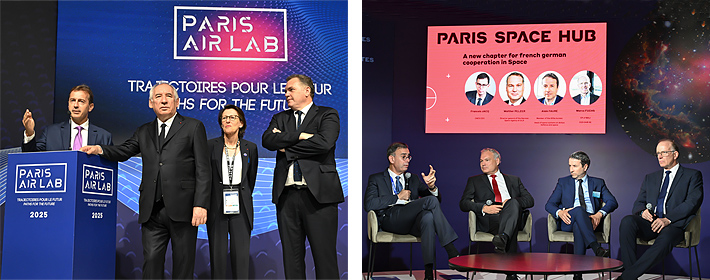
Special events and talks within the Space Hub inspired future careers in aerospace, with a particular focus on inclusivity and the role of women in the industry. Attendees could also participate in a virtual reality space adventure, donning VR headsets to explore Mars, Saturn, and the cosmos in stunning detail.
Aircraft Displays and Aerial Demonstrations
A defining feature of the Paris Air Show is its remarkable display of aircraft. In 2025, 155 aircraft were exhibited, and 173 flight demonstrations showcased the latest in aviation technology. These displays captivated audiences and provided a tangible sense of the progress being made in both civil and military aviation.
The exhibition spanned several hectares, allowing for extensive static and dynamic presentations. Visitors could marvel at the cutting-edge designs and witness firsthand the capabilities of the world's most advanced aircraft. The Air Show featured an impressive lineup of aircraft spanning commercial, military, and experimental categories, captivating audiences both on the ground and in the skies.
Key aircraft on static display and flying demonstrations included Dassault Flamant, ATR 72-600, JMB VL3 Turbiner, Extra 330, Airbus A350-1000, Airbus A220, Airbus A400M, Eurofighter Typhoon, NHIndustries NH90, Airbus Racer Helicopter Demonstrator, Boeing 777X, Lockheed Martin Missile Systems, Embraer E175, Legacy Aircraft, and Drone Demonstrations
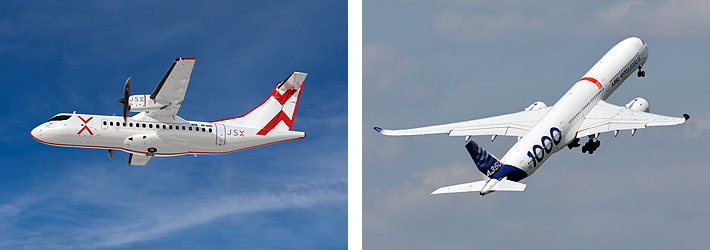
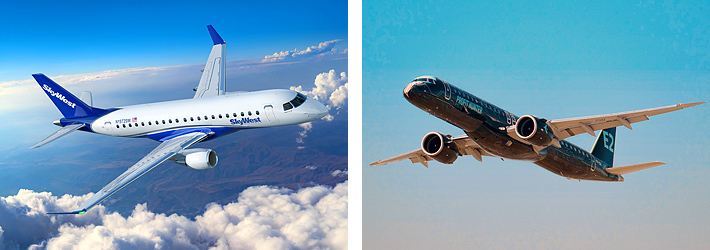
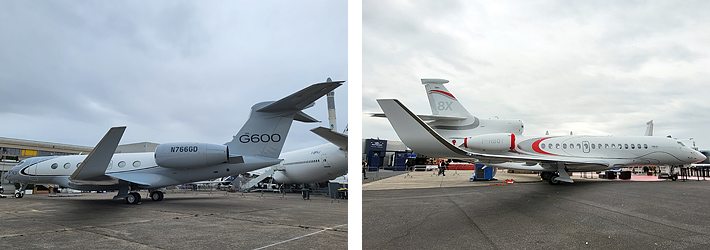
The Patrouille de France, France's renowned precision aerobatic team, performed spectacular formations. The show featured a mix of legacy and modern aircraft, reflecting both the industry's rich history and its future trajectory. Emphasis was placed on sustainability, with aircraft like the Airbus Racer and electric propulsion concepts gaining attention. Military aviation dominated approximately 45 per cent of the show's floor space, with a focus on air and missile defence, ISR platforms, and drone technologies. The integration of unmanned systems with legacy platforms, such as the Airbus A400M and Sikorsky Black Hawk, was a key theme in defence demonstrations.
Business, Innovation, and Strategic Partnerships
PAS is recognised as the premier international meeting point for key players in the aerospace sector. It offers a unique platform for innovation, collaboration, and exchange among professionals from around the world. The event is renowned for shaping the future contours of the aerospace industry, making it a focal point for those seeking to stay at the forefront of technological and business developments.
Business exchanges flourished throughout the week, with the show providing the perfect environment for discussions, networking, and the presentation of new products. Companies utilised the event to showcase their latest innovations to an international audience of industry leaders and decision-makers. The exhibition also fostered the formation of new collaborations and strategic alliances, driving the aerospace sector forward.
At the June 2025 Paris Air Show, sustainability also found focus as the aviation industry moved decisively from ambition to action
Aerospace Meetings Paris, the exclusive business meeting platform at the show, was designed to help participants expand their opportunities and forge new partnerships. The event's role as a catalyst for the creation of tomorrow's aerospace industry was evident in the continuous stream of announcements, deals, and collaborations.
Heritage, Education and Diversity
On June 17, the Show hosted the Skytrax Awards, honoring the world's best airlines for excellence in dining, comfort, and service. The show also dedicated significant attention to inspiring future careers in aerospace, with special emphasis on inclusivity and the vital role of women in the industry. Initiatives like the Women in Aerospace and Space programme highlighted the sector's ongoing efforts to create a more diverse and equitable workforce.
Visitors to the Paris Air Show could journey through the history of conquering the skies, gaining insights into aviation milestones and the evolution of flight. The event provided a platform for civil aviation, enabling professional exchanges on the latest innovations and future directions in aerospace technology.
The 2025 Paris Air Show was marked by a notably subdued atmosphere, with total commercial aircraft orders reaching just over 600, a sharp drop from the 1,338 commitments seen at the 2023 event
Educational initiatives abounded, with programs designed to engage young people and foster a passion for science, technology, engineering, and mathematics (STEM). The Avion des Métiers and the International Rocket Competition, for example, offered hands-on experiences for students aged 12 to 18, challenging them to launch a raw egg aboard a rocket and recover it intact.
Robotics, Digital Exploration, and Esports
The 2025 PAS embraced the digital age with a range of interactive and innovative experiences. Visitors could engage with Pepper the Robot, an interactive robot that converses with guests and blends technology, artificial intelligence, and human connection. The Air Explorer Digital Treasure Hunt challenged attendees to explore key highlights of the show and win prizes using their smartphones.
Drone and esports attractions added a new dimension to the event. Live drone soccer demos, described as "Quidditch with drones," were hosted by Drone Soccer France, while a high-adrenaline drone race saw 24 of the world's top pilots compete in speed and agility challenges. The Autonomous Drone Challenge invited students to fly autonomous drones without GPS, simulating planetary exploration in a dedicated flight cage.
The Paris Air Show was designed to be accessible and engaging for visitors of all ages. Aleo's House and Village featured a giant mural, games, exhibits, and magical performances for children and adults alike.
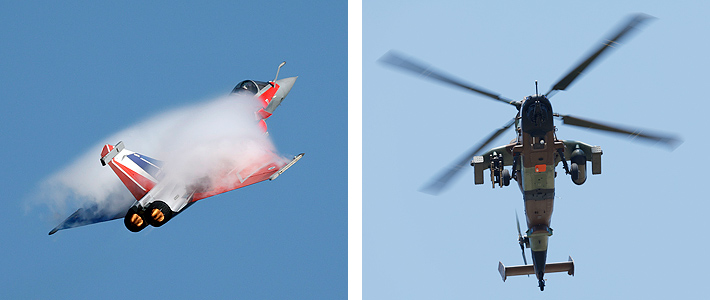
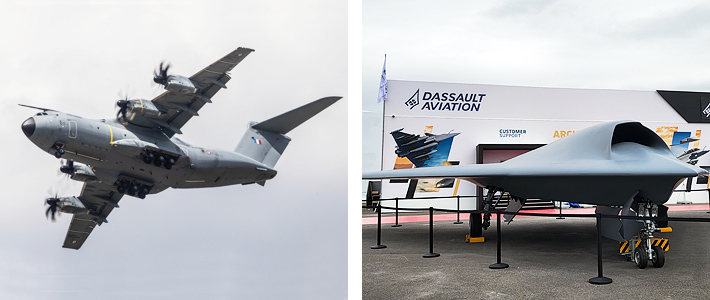
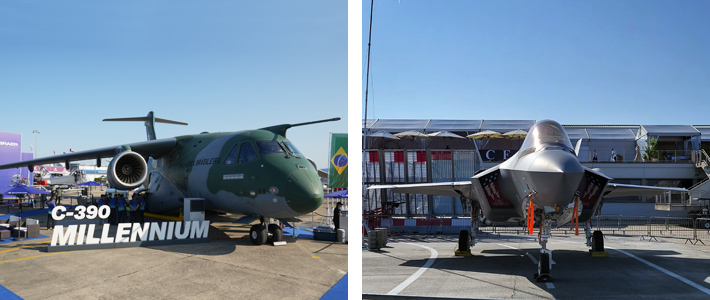
Defence, Security and Space
The defence sector was prominently featured at the 2025 PAS, with displays of cutting-edge military technologies drawing the attention of international experts and officials. Approximately 45 per cent of the show space was dedicated to defence and security exhibits, marking a record for Le Bourget. Geopolitical conflicts (e.g., Ukraine and Gaza) heavily influenced the tone - organisations are prioritising production scale, supply chain resilience, and inventory readiness over flashy new tech.
The event served as a hub for strategic dialogue, with discussions on security, innovation, and advancements in air defence taking center stage. International experts convened to share knowledge and explore the latest trends in defence and security, reinforcing PAS's role as a key platform for the exchange of ideas and the advancement of global security.
The defence sector was prominently featured at the 2025 PAS, with displays of cutting-edge military technologies drawing the attention of international experts and officials
Space sector presentations were a highlight of the 2025 Air Show, with numerous discussions and debates on the new frontiers of exploration and exploitation in space. The event provided a forum for startups and established companies alike to present their visions for the future, fostering a dynamic environment for discovery and partnership.
The U.S. Pavilion, Spaceport USA, offered insights into American aerospace innovation. This international collaboration underscored the show's commitment to fostering global partnerships and advancing the frontiers of aerospace technology.
Sustainability in focus
At the June 2025 Paris Air Show, sustainability also found focus as the aviation industry moved decisively from ambition to action. Sustainable Aviation Fuel (SAF) continued to gain traction as a practical solution for decarbonising flight today. TotalEnergies signed a 15-year agreement with Quatra to secure 60,000 tonnes per year of used cooking oil for SAF production, ensuring a steady supply of low-carbon fuel. In parallel, ATR and ATOBA Energy announced a partnership to make regional aircraft compatible with 100 per cent SAF, aligning supply chains with the industry's sustainability goals.
Hydrogen technology advanced rapidly from research to real-world testing. ZeroAvia received fresh UK government funding for its LH-SIFT project, which aims to integrate and flight-test liquid hydrogen systems for commercial airframes. The company also signed a memorandum of understanding (MoU) with Loganair to introduce hydrogen-electric engines on regional flights and is building a hydrogen fuel-cell manufacturing center near Glasgow Airport. HyFlux, meanwhile, secured a UK grant to develop hydrogen-electric propulsion using superconducting motors and cryogenic cooling, further expanding the hydrogen ecosystem.
The 55th International PAS reaffirmed its position as the world's leading aerospace event, a place where industry professionals, government officials, students, and the general public come together to celebrate the achievements of aviation and space
Collaboration emerged as a cornerstone of sustainability efforts at the show. Public-private partnerships were highlighted as essential, with manufacturers, airlines, energy companies, and governments working together to accelerate progress. The launch of ARIS (Aviation Research and Innovation Strategy for Sustainability) marked a significant Europe-wide initiative, focused on zero-emission aircraft, digital air traffic management, and workforce development through cross-sector collaboration.
The 2025 PAS also revealed how the industry is balancing sustainability with the realities of a shifting geopolitical landscape. Exhibitors presented a blend of green technology and advanced defence or dual-use innovations, reflecting the sector's need to address both security and environmental challenges. Despite the prominence of defence discussions, decarbonisation remained central to commercial aviation strategies, as evidenced by large-scale aircraft purchases, SAF partnerships, and ongoing propulsion innovation.
The PAS made it clear that aircraft orders now prioritise fuel efficiency and lower emissions, while next-generation hydrogen, electric, and fuel-cell propulsion systems are moving into real-world demonstration. Sustainable aviation fuel commitments are scaling up through long-term supply agreements and collaborative partnerships. Initiatives like ARIS are institutionalising broad-based collaboration across industry, energy, and policy sectors. Even as the industry navigates geopolitical tensions, sustainability is firmly embedded as a guiding principle for aviation's future.
Air Traffic Management and Cybersecurity: The Digital Frontier
Thales made a world-first announcement with its RSM NG/IFF dual radar, the only secondary radar capable of simultaneous operation for both military and civil air traffic control. This system complies with ICAO and NATO standards, setting a new benchmark for integrated airspace management.
The company also integrated machine learning into its TopSky-Sequencer system, promising significant improvements in landing sequencing and airport efficiency. This next-generation air traffic management software enables airports to anticipate and manage landings well in advance, enhancing operational fluidity.
Cybersecurity also emerged as a central concern. CERT Aviation offered digital footprint assessments, enabling companies to visualise vulnerabilities and receive tailored advice to strengthen their defences. Thales published a comprehensive report documenting a 600 per cent surge in cyberattacks on the aviation sector between January 2024 and April 2025. The report identified 27 major attacks, attributed to 22 ransomware groups—some linked to state actors. These incidents targeted airlines, airports, suppliers, and critical systems, with motivations ranging from financial extortion to state-sponsored espionage. The majority involved credential theft or unauthorised access, highlighting the urgent need for robust digital protection as the aviation sector becomes an increasingly attractive target for cybercriminals.
Technological Innovation: Propulsion, Materials, and Sustainability
Airbus also used the show to highlight its commitment to cleaner, safer, and more efficient aviation. The company's Disruptive Research & Technology (R&T) unit showcased the IronPod test bench, which achieved a world-record 1.2 MW output from a fuel cell system designed for aviation. This breakthrough points to the future of zero-emission flight.
Aerodynamic innovation was also on display with the eXtra Performance Wing demonstrator, which promises up to 10 per cent fuel savings. Meanwhile, the Airbus Direct Air Capture project is adapting technology from the International Space Station to capture CO2 directly from Earth's atmosphere, supporting broader decarbonisation efforts.
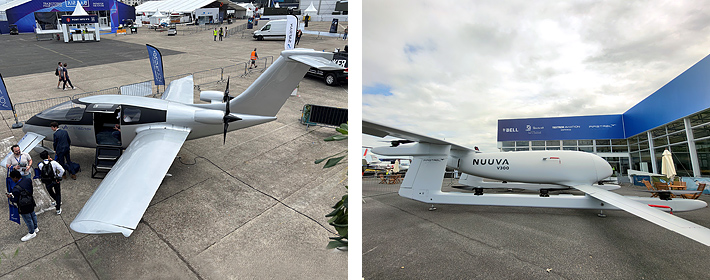
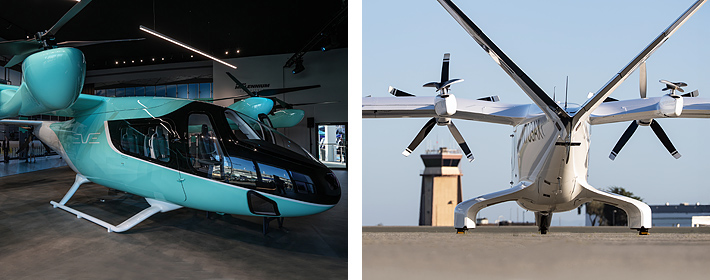
Airbus's broader strategy for low-carbon aviation includes new-generation single-aisle aircraft, hydrogen propulsion, and sustainable fuels, all aimed at meeting stringent safety and performance standards while reducing emissions.
Voltaero's Cassio 330 hybrid aircraft, now entering certification, represents another leap forward in regional aviation. With its sleek design and flexible, green propulsion, Cassio 330 is poised to redefine the regional aircraft market.
On the energy storage front, Safran Electrical & Power and Saft announced a partnership to develop a high-voltage battery for aerospace, targeting operational readiness by 2028. This initiative is a key step toward the industry's goal of carbon neutrality by 2050.
Major Orders and MoUs
The 2025 Paris Air Show was marked by a notably subdued atmosphere, with total commercial aircraft orders reaching just over 600, a sharp drop from the 1,338 commitments seen at the 2023 event. Several factors contributed to the quieter tone, including persistent supply chain disruptions, heightened geopolitical uncertainty, and the recent Air India tragedy, all of which dampened the usual excitement at Le Bourget.
Airbus emerged as the clear leader, securing 248 firm orders (including Memoranda of Understanding and Letters of Intent) and an additional 156 options. Boeing's presence was minimal, with the company booking only 41 firm orders and four options, all from ANA Holdings (23 787-9 Dreamliners and 18 737 MAX 8s, plus four options). These were not new announcements, but rather the firming of previously disclosed deals. Boeing made no new commercial order announcements during the show.
Embraer reported 79 firm orders and 60 options, highlighted by a 60-aircraft order from SkyWest Airlines for the E175, to be operated for Delta, American, and United. The Brazilian manufacturer also logged smaller military commitments, including a C-390 order from Portugal and three LOIs from Lithuania, in a deal valued at $3.6 billion and deliveries beginning in 2027.
ATR, the turboprop specialist, signed a deal with JSX for two ATR 42-600s and a letter of intent (LoI) for 15 new ATR Highline-equipped aircraft, plus 10 options.
Overall, the 2025 Paris Air Show signaled a shift in industry dynamics, with manufacturers increasingly choosing targeted, deal-specific announcements over blockbuster air show reveals. Airbus dominated the order tally, while Boeing's reduced presence and lack of new deals underscored the event's more restrained tone
Additionally, France signed an LoI to acquire Saab's GlobalEye AEW&C platform, reflecting Europe's rising focus on advanced ISR capabilities.
India's showcase at Paris Air Show 2025
At the Paris Air Show 2025, India made a strong impression as an emerging force in aerospace and defence innovation. Eighteen Indian companies, led by Defence Research & Development Organisation (DRDO) and Hindustan Aeronautics Limited (HAL), showcased a range of indigenous technologies, underscoring India's growing stature as a self-reliant manufacturing hub. DRDO's display included advanced systems such as the Astra BVR air-to-air missile, HELINA anti-tank guided missile, Tejas Mk-2 Light Combat Aircraft, Swathi Weapon Locating Radar, and the NETRA AEW&C system.
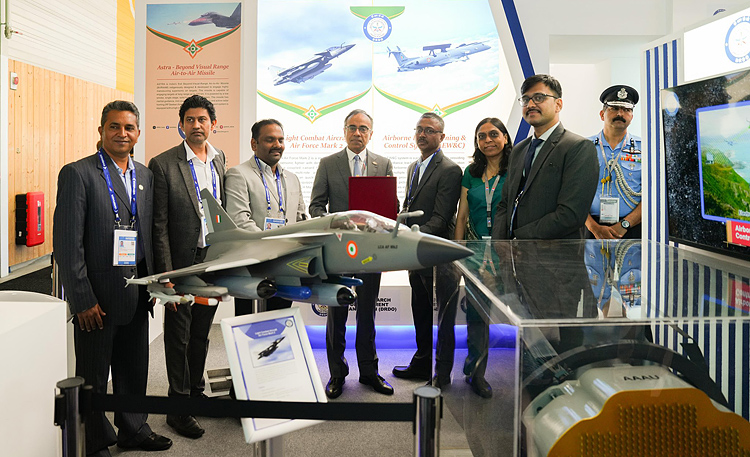
The private sector was also active, with Wipro Infrastructure Engineering acquiring a majority stake in France's Lauak Group to form Wipro Lauak, and Reliance Aerostructure partnering with Dassault Aviation to establish a Falcon 2000 assembly line in Nagpur, the first Dassault production site outside France. Lohia Aerospace Systems highlighted its composite manufacturing capabilities for UAVs and aircraft, while Raghu Vamsi Aerospace Group introduced a new micro turbojet engine and a high-speed kamikaze UAV. Bharat Forge, in partnership with France's Turgis Gaillard, signed an MoU to offer the AAROK MALE UAV for defence applications. Led by DRDO Chairman Samir V. Kamat, the Indian delegation emphasised the nation's ambition to become a global hub for aerospace and defence manufacturing, with a focus on public-private collaboration, indigenous propulsion technologies, and strategic international partnerships. Tata Consultancy Services (TCS) hosted sessions on topics such as Integrated MRO Platform, Physical AI, and Battery Passport, and showcased demonstrations including AI-enabled robotic dogs for landing gear inspection and vision-guided robotics for fastener detection. India's presence at the show clearly signaled its readiness to serve both domestic and allied markets as a capable manufacturer and exporter of advanced defence systems.
The Future Takes Flight
From landmark commercial deals and next-generation propulsion to digital security, space exploration, and upcycled aviation, the Paris Air Show 2025 encapsulated the spirit of innovation and strategic adaptation that defines today's aerospace industry. The diverse and dynamic aircraft lineup at PAS 2025 also showcased the aerospace industry's blend of tradition, cutting-edge technology, and strategic innovation, providing attendees with a comprehensive view of aviation's present and future. However, as the sector faces unprecedented technological, environmental, and geopolitical challenges, the breakthroughs and collaborations unveiled at Le Bourget point the way to a future where sustainability, sovereignty, and resilience are at the heart of aviation and space.
The 55th International PAS reaffirmed its position as the world's leading aerospace event, a place where industry professionals, government officials, students, and the general public come together to celebrate the achievements of aviation and space. From immersive journeys into space and spectacular aerial displays to strategic business meetings and educational initiatives, PAS continues to shape the future of aerospace, inspiring the next generation and driving the industry forward into new frontiers. With its record-breaking attendance, diverse array of exhibitors, and dynamic programme of events, the 2025 edition set new standards for excellence, innovation, and inclusivity.





